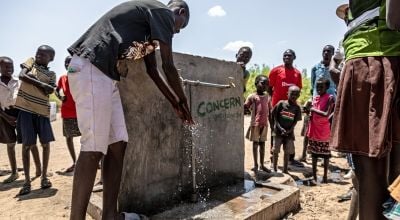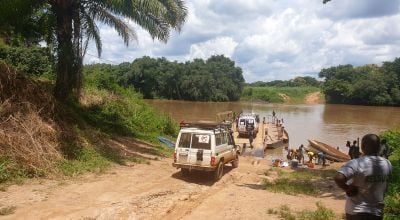
Read our 2023 annual report

Knowledge Hub
From what Concern is doing in some of the world’s most water-stressed countries, to what you can do to help, here are 10 solutions to the global water crisis.
According to UN-Water, the outlook for meeting Sustainable Development Goal No. 6 — clean water and sanitation for all — by 2030 isn’t good. Approximately 10% of the global population lives in a critically water-stressed country. By 2050, 75% of the world could be dealing with the impacts of drought.
While the figures are stark, there is still progress being made. To give you a sense of how that progress happens, here are 10 water crisis solutions that work.
1. Water trucking
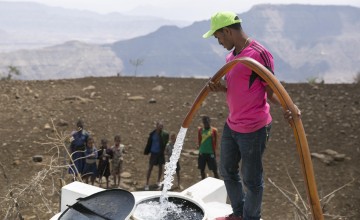
The simplest solution to the water crisis: Give people water. (Mind-blowing, we know.) Water trucking is one of the quickest short-term solutions to scarcity, and does what it says on the tin. Trucks are chartered into areas like a refugee camp or a drought-stricken community, where residents can fill up. This is an expensive solution and not a long-term fix for a crisis; but it can be a life-saving stop-gap in dire situations.
2. Desalinators and water purification tablets

Often, areas without access to safe, potable water still have access to some form of non-potable water. There are options to work with what’s available. For seawater, we can use individual, portable desalination devices (or desalinating at a mass-scale). Water purification tablets are also handy for freshwater sources, killing microorganisms and pathogens that cause typhoid, cholera, and other waterborne illnesses.
3. Protect existing freshwater sources
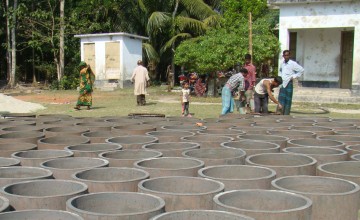
In best-case scenarios for where Concern works, there is often already a natural spring in a community. In that case, another solution that sounds simple but carries a huge impact is protecting what we already have. This can often be done relatively easily with protective structures that keep the land above and around the water source free from human and animal interference and contamination.
4. Address leaks and other water waste

This is an issue even in communities where water resources are tight. The UN Environmental Programme notes that there is no global data on how much water is lost through leaks, but in the US alone, household leaks account for nearly 1 trillion gallons of water loss per year. Plugging these holes in both individual homes and within larger infrastructure and pipes will help conserve what’s already on hand.
This is also where community partnerships become key to any solution to water scarcity: Community members often know where things can be improved, and are ready to work towards those improvements with the right support.
5. Rainwater harvesting

A solution that’s both low-tech and low-cost in areas that get enough rainfall is to collect and store that rainwater. Rainwater harvesting systems build on a catchment surface, like a roof, and create a pathway for the water to run into a storage tank. The systems are easy for communities to manage. It can be rendered potable with some processing, and is also useful for agriculture (which takes up a lot of water in stressed countries), livestock, schools, and hospitals.
6. Rehabilitating and building water points

Water trucking is a short-term solution, but more sustainable in the long run is building a water point or rehabilitating one that is already there. Sometimes we need to drill for a new water point, which requires analysing groundwater distribution and soil and rock structure and finding the right place to dig. Sometimes, communities have already dug these wells, and Concern only needs to help with fitting in hand pumps that seal and protect the well — this makes collection easier and water safer. In areas where grid power is unreliable (or nonexistent), solutions like solar water pumps are an economically- and ecologically-friendly solution that makes use of the most reliable resource: sunlight.
7. Water management committees
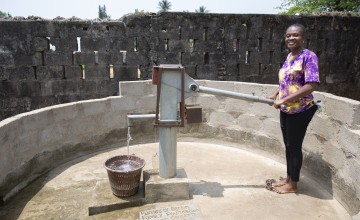
Going back to community-centred approaches, when community members take ownership of their local water systems, both present and future, water is more available (especially to those who need it most). Water management committees (WMCs) are made up of community-elected members who oversee and manage local resources, and are trained to do so. This combination of skills and trust helps keep projects running smoothly for years and decades, and is a vital component of a strong water infrastructure.
8. Eliminate water dumping and other pollutive activities
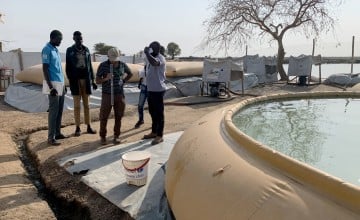
Approximately 1 million people die each year due to water contamination. We can’t solve the global water crisis on our own as individuals. But we can work together to push for actions that ban and enforce restrictions on wastewater dumping. The NRDC estimates that 80% of such wastewater is dumped back into the ecosystem, untreated. Governments and corporations must work together to prioritise ending water dumping and other pollutive activities that contaminate drinking water.
9. Improve water infrastructure at the national level…
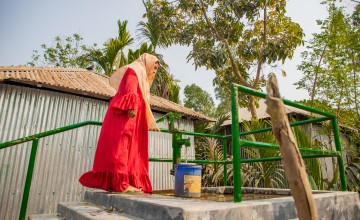
In fragile states, it’s often the case that there isn’t enough government infrastructure or capacity to deliver WASH services. This is an explanation, but it isn’t an excuse. At Concern, we work with local authorities and national governments to strengthen the capacity they have to ensure their citizens have clean water and access to other hygiene and sanitation necessities.
10. …and at the international level

This goes back to the idea that water is an intersectional — and inter-border — issue. Many corporations based in high-income countries outsource production to lower-income countries, meaning that they are often contributing to the water contamination in those lower-income countries.
Many rivers, lakes, and aquifers also cross international borders and are shared between nations. In a 2021 UN Water report, only 24 countries reported that all such sources shared with neighbouring countries were covered by operational arrangements for cooperation.
Can we solve the global water crisis?
Currently, none of the 17 Sustainable Development Goals are on track to be met by 2030. However, that doesn’t mean that the cause is hopeless. The UN reports that, since 2015, over 600 million people have gained access to safely-managed drinking water. Globally, three out of four people had safe drinking water in 2020. In that time, water-use efficiency has increased 10% globally.
These are great steps, but at our current rate, progress is still behind. You can help take a stand by understanding how much water you use at home and finding ways of reducing it where possible. You can also learn more about the issues both within your own community and in other communities around the world — if your hometown has a sister city, that’s a good place to start — and advocate your local representatives to take greater and bolder action towards ending water scarcity around the world.
You can also support organisations like Concern to ensure that water, sanitation and hygiene services reach those who need it most. All of these actions may seem like drops in the bucket, but those drops add up.



